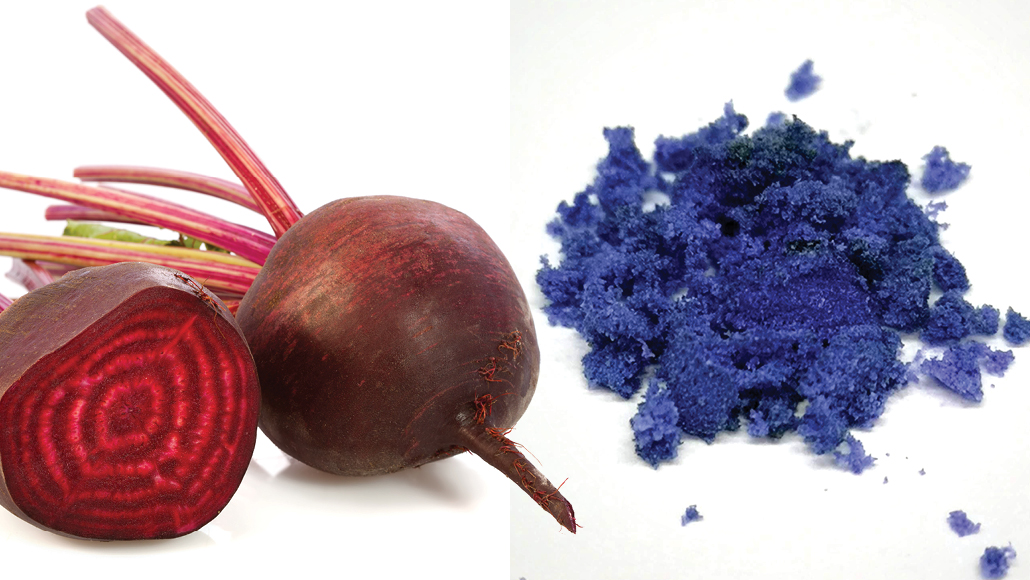
The powdered food additive maltodextrin (right) gets a splash of color from a new blue dye derived from red beets.
Avalon_Studio/E+/Getty Images plus (left); E.L. Bastos (right)

The powdered food additive maltodextrin (right) gets a splash of color from a new blue dye derived from red beets.
Avalon_Studio/E+/Getty Images plus (left); E.L. Bastos (right)